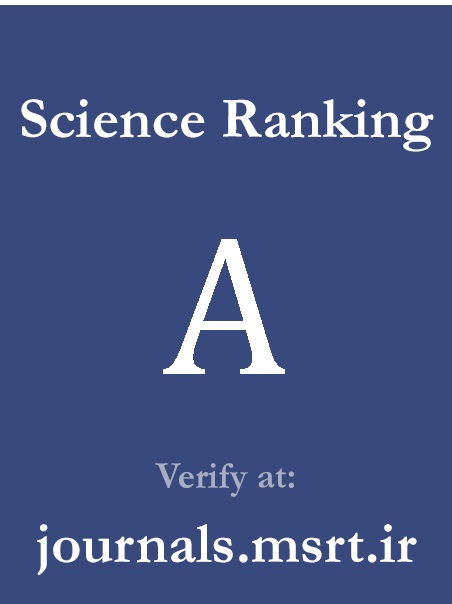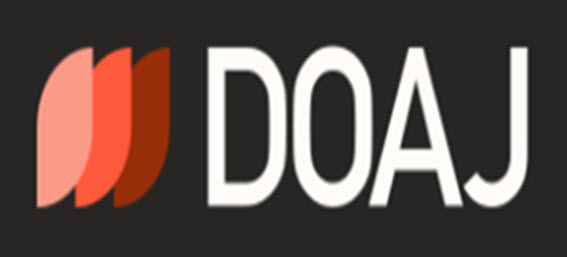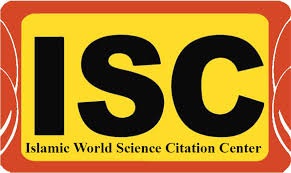Empirical Validation of the Strategic Model for Art Education in Iraqi Secondary Schools: A Confirmatory Factor Analysis Approach
Keywords:
Art Education, Model Validation, Confirmatory Factor Analysis, Lived Experiences, Secondary Schools, IraqAbstract
Purpose: The aim of the present study is to empirically validate a strategic model for art education in Iraqi secondary schools, based on the lived experiences of art teachers and employing a confirmatory factor analysis (CFA) approach.
Methods and Materials: This research follows a prior qualitative study designed using a phenomenological approach, in which the challenges of art education were identified at three levels: content-curricular, infrastructural-technological, and human resources. In the current phase, utilizing data collected from 132 high school art teachers in Wasit Province, Iraq, the validity and reliability of the constructs and dimensions of the proposed model were assessed.
Findings: The analysis revealed that the model demonstrated satisfactory statistical fit, high reliability, and acceptable convergent and discriminant validity. The most influential components in the final model included “infrastructural and equipment-related solutions,” “revisions to the art curriculum,” and “strengthening team collaboration.” Emphasizing the integration of local cultural elements, professional development for teachers, and the use of modern technologies, the model offers a localized, data-driven framework for enhancing the quality of art education within the Iraqi educational system.
Conclusion: The findings can serve as a scientific basis for educational policymaking in developing countries.
Downloads
References
Abdolhosein, M. (2024). The Reality of Teaching Art Education in Baghdad. Journal of the College of Basic Education, 30(126), 139-158. https://doi.org/10.35950/cbej.v30i126.12213
Al-Jassar, A. T. J. (2021). The Role of Contemporary Art Education Concepts. Journal of Arts and Humanities, 7, 1-20.
Al-Jazair, M. K. (2023). Traditions in the System of Art Education in Iraq. Siberian Pedagogical Journal. https://doi.org/10.15293/1813-4718.2303.04
Al-Khalfaji, D. H. S., Mousavi, F., Al-Ma'mouri, K. J. R., & Karimi, F. (2024). Investigating Factors Affecting Effective Teaching Dimensions in Iraqi Art Education. AI and Tech in Behavioral and Social Sciences Journal, 2(1), 18-24. https://doi.org/10.61838/kman.aitech.2.1.3
Ali, M. F. (2018). Challenges faced by secondary teachers in teaching arts education in Fiji - A case study of Western Division. IRA International Journal of Education and Multidisciplinary Studies, 10(3), 48-60. https://doi.org/10.21013/jems.v10.n3.p4
Ardipal, A. (2017). Art education and its problems in global context.
Bamford, A. (2006). The wow factor: Global research compendium on the impact of the arts in education. Waxmann. https://sms.aec-music.eu/music-in-society/aec-annotated-bibliography/bamford-a-2006-the-wow-factor-global-research-compendium-on-the-impact-of-the-arts-in-education-munster-waxmann/
Bandura, A. (1986). Social Foundations of Thought and Action: A Social Cognitive Theory. Prentice Hall. https://books.google.de/books/about/Social_Foundations_of_Thought_and_Action.html?id=HJhqAAAAMAAJ&redir_esc=y
Dadashi, S., Sabze, B., & Bazgir, T. (2022). Analysis of Teachers' Experiences in Implementing Art Curriculum in Virtual Education for Primary Schools. Curriculum Theory and Practice, 10(20), 89-128. https://www.jcstpicsa.ir/article_190804.html?lang=en
Ebrahimi Nia, A., Zanganeh Motlagh, F., Jafarian Yasar, H., & Mohammadi Naeini, M. (2020). Analysis of Aesthetic Education Curriculum and Identification of Aesthetic Teaching Strategies at Farhangian University. Teaching Research, 8(4), 164-192. https://trj.uok.ac.ir/article_61675.html
Eisner, E. W. (2002). The arts and the creation of mind. Yale University Press. https://books.google.de/books?id=Wk8LUJX1eXoC&hl=de&source=gbs_navlinks_s
Freedman, K. (2018). Art education as social production: Culture, society, and politics in the formation of curriculum. In The formation of school subjects (pp. 63-84). Routledge. https://doi.org/10.4324/9780429454165-3
Garcia‐Lazo, V. (2024). The Potential of Visual Arts Education: Strengthening Pre‐Service Primary Teachers’ Cultural Identity. International Journal of Art & Design Education, 43(2), 221-240. https://doi.org/10.1111/jade.12499
Gardner, H. (1983). Frames of Mind: The Theory of Multiple Intelligences. Basic Books. https://books.google.de/books/about/Frames_of_Mind.html?id=2IEfFSYouKUC&redir_esc=y
Gormley, K. (2025). Creativity as a transferable concept in arts education curriculum: Synergies and tensions in the Irish context. Arts Education Policy Review, 1-13. https://doi.org/10.1080/10632913.2025.2451808
Hetland, L., Winner, E., Veenema, S., & Sheridan, K. M. (2013). Studio thinking 2: The real benefits of visual arts education. Teachers College Press. https://books.google.de/books/about/Studio_Thinking_2.html?id=zfZe_oY7orkC&redir_esc=y
Jalongo, M. R. (2019). The arts in children's lives: Context, culture, and curriculum. Allyn & Bacon.
Martins, C. (2024). Trying to Undo the Colonialities of Arts Education: The Construction of a Workbook as Curriculum‐(Un)Making. International Journal of Art & Design Education, 43(3), 415-432. https://doi.org/10.1111/jade.12511
Moushenah, H. A., Mousavi, F., Al-Ma'mouri, K. J. R., & Karimi, F. (2024). Investigating Factors Affecting the Development of Creative Skills in Iraqi Art Teachers. Journal of Educational Sociology, 10(2), 231-242. https://www.iase-jrn.ir/article_703254.html
Saif, M. M. (2024). Impact of Arts Education on Psychological wellbeing among Undergraduate Students. Al-Nasr, 3(1), 99-120. https://doi.org/10.53762/alnasr.03.01.e07
Schneider, V., & Rohmann, A. (2021). Arts in Education: A Systematic Review of Competency Outcomes in Quasi-Experimental and Experimental Studies. Frontiers in psychology, 12, 623935. https://doi.org/10.3389/fpsyg.2021.623935
Vygotsky, L. S. (1978). Mind in Society: The Development of Higher Psychological Processes. Harvard University Press. https://books.google.de/books?id=RxjjUefze_oC&hl=de&source=gbs_navlinks_s
Wessner, D. R. (2024). Incorporating Art Into a Biology Course: A Student-Curated Art Exhibition About COVID-19. Journal of Microbiology and Biology Education, 25(1). https://doi.org/10.1128/jmbe.00142-23
Xu, Y., & Ramli, H. B. (2024). The Development of The Interdisciplinary Talent Training Model for The New Media Art Major. Journal of Education and Educational Research(1), 143-145. https://doi.org/10.54097/92wx3910
Zahiri, F., Safari, M., Goodarzi, H., & Bayati, A.-A. (2022). Design and Validation of a Four-Component Curriculum Model Based on Aesthetic and Art Components for Secondary Education. Psychological Studies of Adolescents and Youth, 3(3), 280-303. https://doi.org/10.61838/kman.jayps.3.3.22
Zhang, C., & Li, X. (2023). Construction of Digital Art Education Platform Under the “Internet+” Environment. Mobile Information Systems, 2023, 1-13. https://doi.org/10.1155/2023/8453791
Downloads
Published
Submitted
Revised
Accepted
Issue
Section
License
Copyright (c) 2025 Suad Abbas Neamah Al-Tameemi (Author); Leila Hosseini Tabaghedehi; Falah Kadhim Hussein Al-Juaifari, Zohreh Agha Kasiri (Author)

This work is licensed under a Creative Commons Attribution-NonCommercial 4.0 International License.










